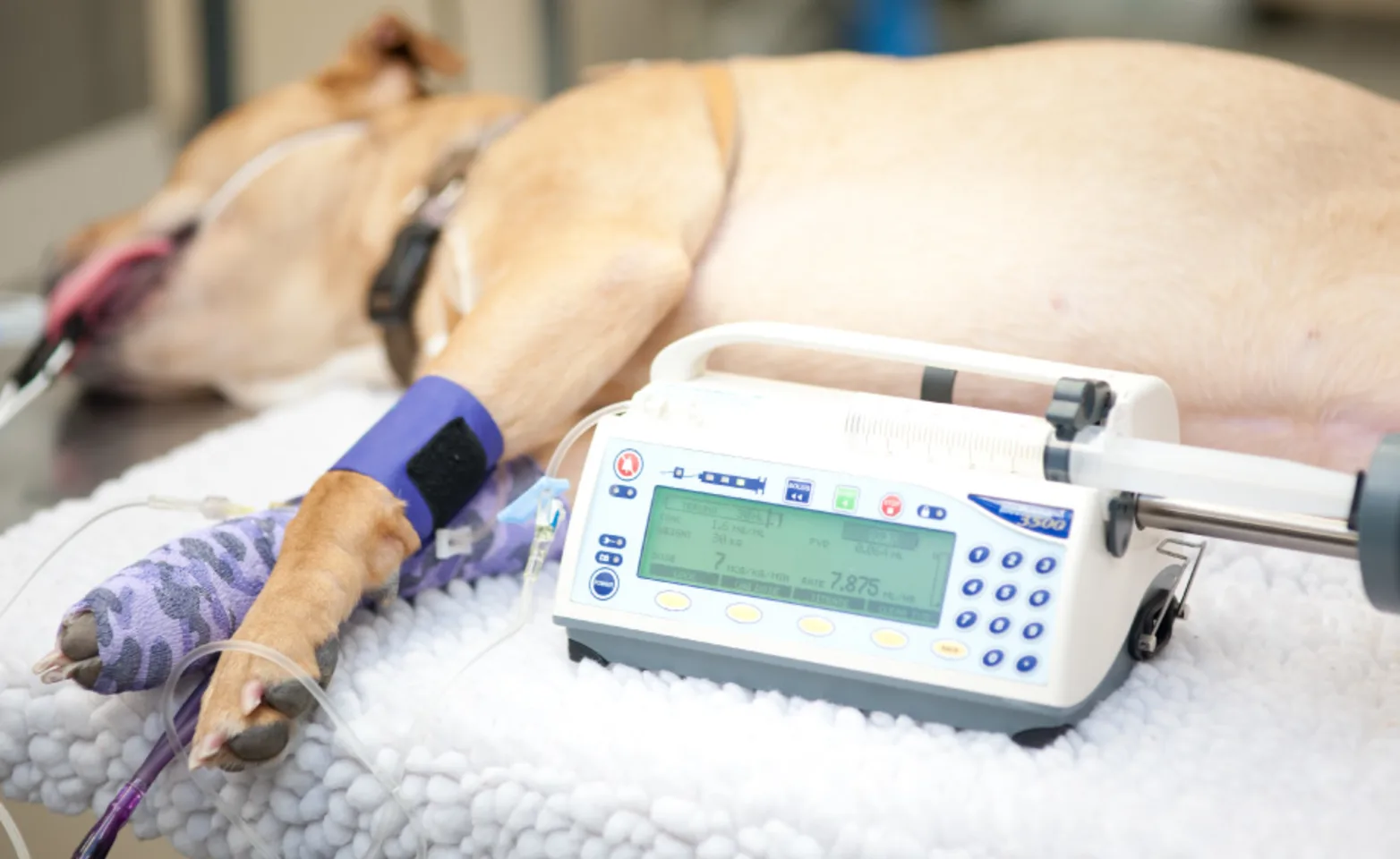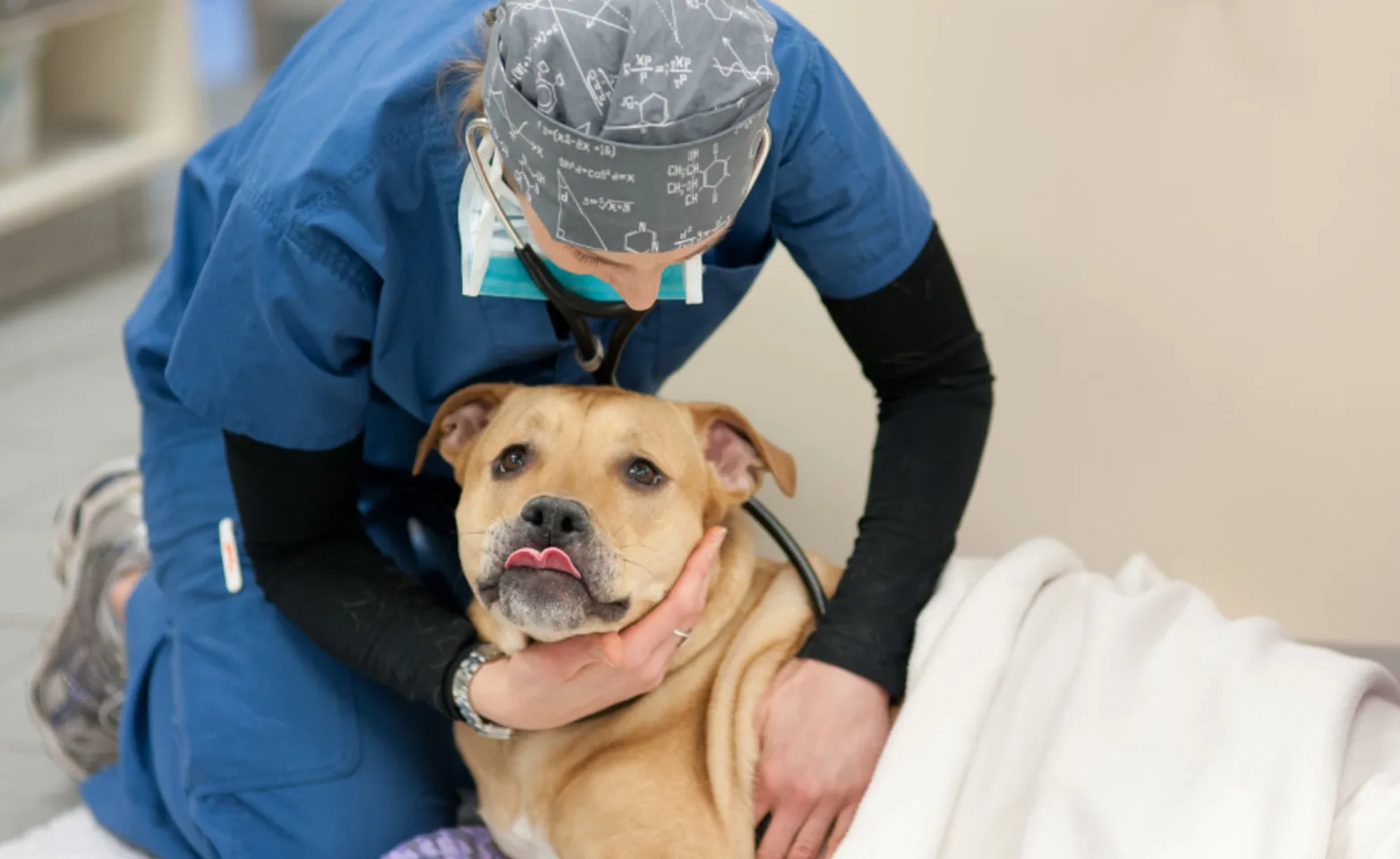Veterinary Emergency and Referral Hospital of West Toronto
Anesthesia
Having your pet sedated or anesthetized is a common fear among pet owners. There are risks involved when performing these procedures however all precautions are taken to significantly minimize these risks. Veterinary anesthesia is very similar to what is available in current human medicine. Our Board Certified Anesthesiologist will perform a physical examination on your pet, review all laboratory results and other diagnostics that are available. They will also take into account the type and length of procedure being performed to gather a full health history. This will allow the anesthesiologist to choose a tailored protocol for your pet which will make the procedure as safe and pain free as possible. An example of this would be a pet that has elevated liver values on blood-work. Some of our injectable medications are filtered and metabolized in the liver therefore the anesthesiologist would choose anesthetic agents that are liver sparing.

The Difference Between General Anesthesia and Sedation
When your pet is sedated for a procedure it usually is administered through an IV catheter using injectable medications. Sedation is used for short, non-painful procedures such as, but not limited to, radiographs, fine needle aspirates, or bandage changes. The sedated patient often remains conscious throughout the procedure and does not require intubation. Some sedatives will gradually wear off over several hours, while others can be reversed. Reversible agents allow the patient to recover rapidly to the pre-sedative state.
With general anesthesia, your pet is completely unconscious and they are unable to respond to reflexes or feel pain during medical procedures. Inhalant gases are frequently used when maintaining adequate anesthetic depth. To achieve this, a short acting injectable agent is administered. This will allow the technician or anesthesiologist to place an endotracheal tube into your pet’s trachea (windpipe). At this time the anesthetic gas, which is mixed with oxygen, is delivered to the patient. When the procedure is finished, the patient recovers from the inhalation anesthesia by breathing pure oxygen while exhaling anesthetic gas. Under normal conditions, dogs and cats begin to awaken within 15 minutes of cessation of the anesthetic, with a full recovery usually taking place within 2 hours.

How Will My Pet Be Monitored?
Your pet will be monitored in a variety of ways to insure a safe and pain free anesthetic. All of these parameters help assess anesthetic depth and maintain proper circulation. Heart rate will be monitored with a stethoscope and a electrocardiograph (ECG). Body temperature is maintained by use of a circulating warm water blanket and warm air blanket while the patient is under anesthesia. Blood pressure monitoring is used to help assess anesthetic depth and maintain major organ blood flow and can be monitored with direct or indirect measures. Red blood cell oxygen saturation is also monitored with a pulse oximeter.
The anesthesiologist and her team monitor respiratory rate and depth, and respirations can be assisted with a mechanical ventilator if indicated. Additionally, carbon dioxide levels can be monitored to further evaluate the respiratory status of some patients and determine the need for mechanical ventilation. Intravenous fluids are usually administered through one or more intravenous catheters to maintain hydration, blood pressure, and urine production.

Post-Operative Care
Post-operatively, the recovering patient is carefully observed until the swallowing reflex returns and the endotracheal tube can be safely removed. At this time a narcotic may be administered to help smooth recovery and minimize post-surgical discomfort. Vital signs (temperature, pulse, and respiratory rate) are monitored until they are normal.
Any anesthetic procedure has a risk, whether the patient is anesthetized once or multiple times, or whether the patient is ill or healthy. However, with proper examination of the patient’s general condition, appropriate preoperative screening, careful selection of anesthetics and attentive monitoring, that risk can be minimal. Our surgery team will discuss with you any risk factors your pet may have before sedation or general anesthesia to ensure the safest anesthesia for your special furry friend.
